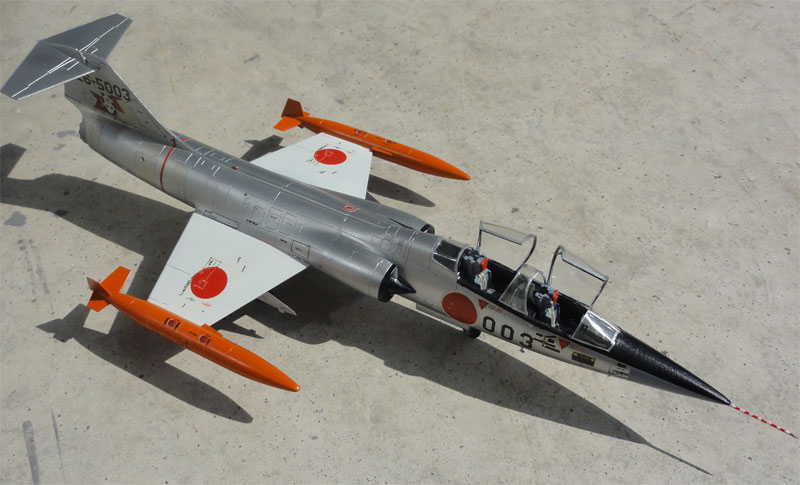a series of 1/72 kits
1/72 scale kits of the F-104 Starfighter
... continued from previous page....
Old HASEGAWA kits
Hasegawa has issued several 1/72 scale
F-104 kits. In nineteen-sixties and early seventies their F-104 was very
basic. Although I am not sure, I think this kit was the same as previously
issued by FROG.
It appeared in several boxes such
as kit no. 1013 for a F-104G with West German Luftwaffe or Canadian
Royal Air Force decals:
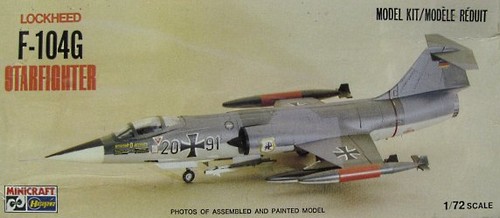
and as F-104J and was also issued
by Minicraft USA:
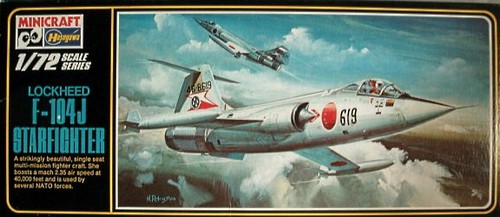
.
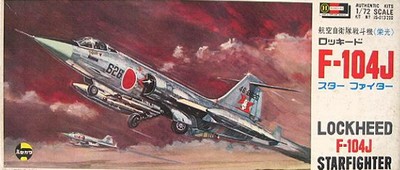
Also I think Academy made a "copy"
of this same kit with this boxart:
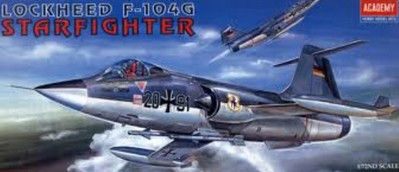
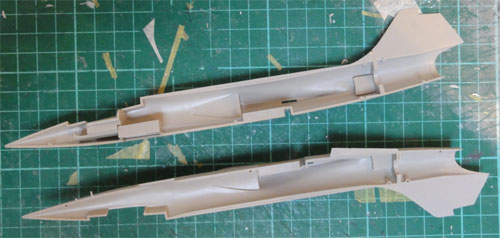
This is an older Hasegawa kit with
a cockpit interior in 1 piece, tub and some sort of seat shape. The canopy
is one piece. The wheels look to be the "thin" type with non-bulged undercarriage
doos, as appropriate for an early Starfighter. But there is NO main gearbay
roof / interior but the main doors are to be set closed. The fuselage is
in two halves, with larger tailfin with extended rudder for the F-104G
and 4 large fueltanks and 2 Sidewinders. Panellines are raised.
Markings in this old F-104J kit are
for:
1/ JASDF F-104J 207 squadron/ 83
air corps at Naha/Okinawa in a metal finish and white wings
2/ JASDF F-104J 207 squadron/ 7 air
corps at Hyakuri in a metal finish and white wings
3/ Luftwaffe West-Germany, JG71 Richthofen
squadron with split straight lined camouflage
I believe these kits show incorrectly no differences between the F-104J and the F-104G (the latter has thicker wheels and bulged wheel doors of the -G).
I made a model of this kit in 1977! It was finished in KLu markings using very old IPMS Nederland decals. At the time it was really difficult to find appropriate decals and colours were difficult to find in ready to use paints! The completed model still survives despite the gaps, lack of putty and yellowish markings, but is in the "bottom shelf".... only for nostalgia! I was proud of it at the time.

.
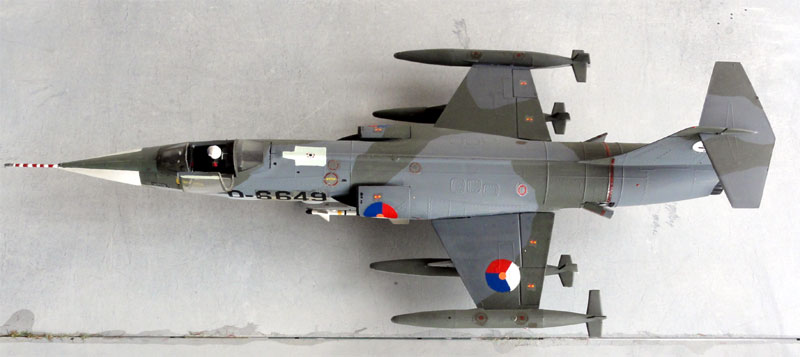
Newer Hasegawa kits
Later Hasegawa issued much better brand new kits with new moulds, with many different markings, decals and boxes.
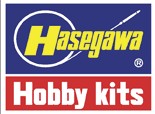
F-104G
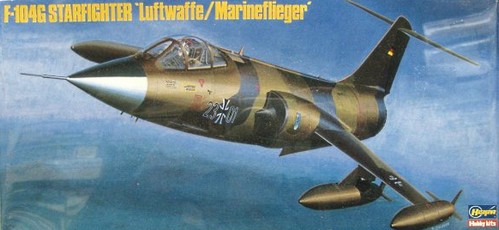
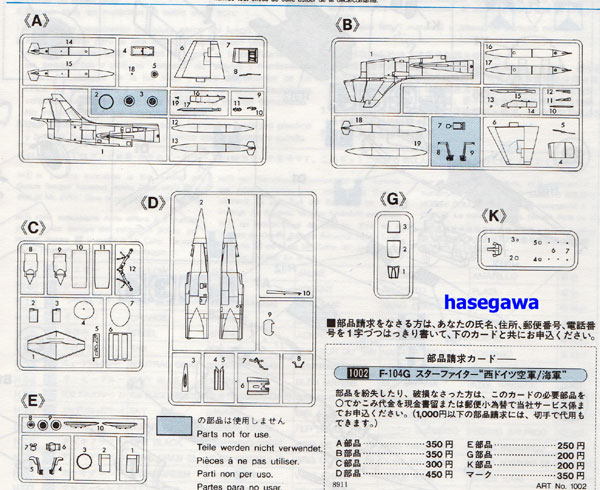
Here the 1/72 F-104G parts layout
is seen of the later Hasegawa kits issued 1989 (kit no 1002?).
All these later kits have recessed panellines but the rear fuselage sections have rivets. These could be filled as the real aircraft is rather smooth. But I found them hardly noticeable after a grey base coat as airbrushed to check for any flaws before appyling th camouflage colours.
The wing fueltanks look OK and of correct thickness and look better than e.g. the Revell kits. Two types of ejection seats are in the kit, the Lockheed C2 and later Martin baker seats. Also the canopy and windscreen look good.
Each kit has separate forward and rear parts for the fuselage, so four in total. This requires a good alignment when assembling the fuselage and the assembly is very weak.
Schemes differ per particular box
with this kit issued:
Issue kit no.1002 has these West
German decals provided:
(1) F-104G West German Luftwaffe
JBG34 in a wrap around camouflage scheme in a modern style;
(2) F-104G West German Luftwaffe
JBG31 with an old style camouflage and lower aluminium surface;
(3) F-104G West German Naval
MARINE flieger MFG1 with simple upper dark grey upper surfaces and lower
aluminium.
(3) F-104G West German Naval
MARINE flieger MFG2 with simple upper dark grey upper surfaces and lower
aluminium and orange details.
Issue kit with unclear kit no. for
a JASDF
F-104J aircraft (but without
a couple of extra parts for the MB seat, only C2 seat):
(1) JASDF F-104J 207 squadron overal
light grey scheme;
(2) JASDF F-104J 204 squadron aniversary
with overal light grey scheme;
(3) JASDF F-104J 207 squadron overal
light grey scheme but also medium gray pattern on lower and upper surfaces;
CF-104 version
also with unclear kit no. is very similar to the F-104G kit
1002 and decals for CANADA aircraft:
(1) CAF 417 squadron with a metal
scheme of quite high visibility;
(2) CAF 439 squadron with an overall
green scheme;
(3) CAF 1 CAG with a patterned camouflaged
scheme; and lower grey surfaces;
In this kit, the cockpit is not bad and is assembled in combination with the nose gear bay. The main instrument panel shows gaps with the fuselage sides. Fill up with card.
The intake parts do not fit perfectly, so requiring filling and sanding as well as the spine between forward and rear fuselage parts.
After getting a smooth straight fuselage the fit of the wing halves should be done. The fit is good but I had difficulty with their angle. I later found that the whole look was not symmetrical after fitting the main undercarriage. But then discovered that the problem was not the wing halves, but a slightly asymmetrical fit of the main gear bay roof” part #C6. It must be done very precise, otherwise the model will not stand correctly and symmetrical on its undercarriage. My fault! So when assembling this, take care.
The fit of the
main doors is not very good, and as suggested by Hasegawa these were set
almost closed as often seen on parked Starfighters.
![]()
![]()
Three Hasegawa models were made for
F-104G Starfighters in Royal Netherlands AF (KLu)
markings.
Dutch
Decals sets such as 72069 and 72006 were used for the Dutch
markings. To make multiple KLu models, some sheets are needed to get all
stencilling complete.
Note that "NO STEP" markings may
differ per aircraft, depending on period: NO STEP texts until about 1974,
white footsteps till 1976 and later yellow footsteps. A mix is also seen.
Standard colours for the KLu Starfighters
are:
RAL 6014 green; Xtracolour X251 can
be used. Or a mix of 50% Humbrol 163 and 50% Humbrol 116;
RAL 7012 medium grey; Revell 77,
Humbrol 79, Xtracolour X207 or Gunze Sangyo acrylic 69 can be used;
RAL 7001 light grey; Revell SM374
can be used or Humbrol 128, made lighter with a bit white mixed in;
The camouflage patterns have "hard" demarcation, so was masked off with low tack tape (I used the yellow Tesa tape) before airbrushing. Anti glare panel in front of the windshield is mostly medium green FS34102. Radar nose often "off" white, about FS36622. The glassfibre panel aft of the cockpit is also in most cases off white (but sometimes also light buff). Interiors are light grey and the insides of gearbays aluminium or green zinc chromate primer. Gear undercarriage legs are often aluminium coloured. Intake edges are black.
[1] F-104G with code "D-8331" with a year 1979 demonstration Starfighter of KLu 312 squadron at Volkel AFB of the famous pilot Hans van der Werf was made, using Dutch Decal set 72006. The shark decal was cut in half and reduced in length about 2 mm in the middle. The RAL colours were again applied.
Before applying
decals, ensure a really gloss varnish base coat such as Johnson
Future / Pledge with the airbrush. You will later
see that still there is some "silvering" below some decals on the models...
hum.

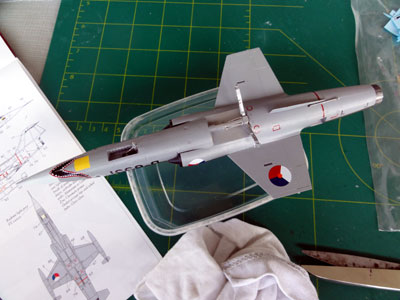
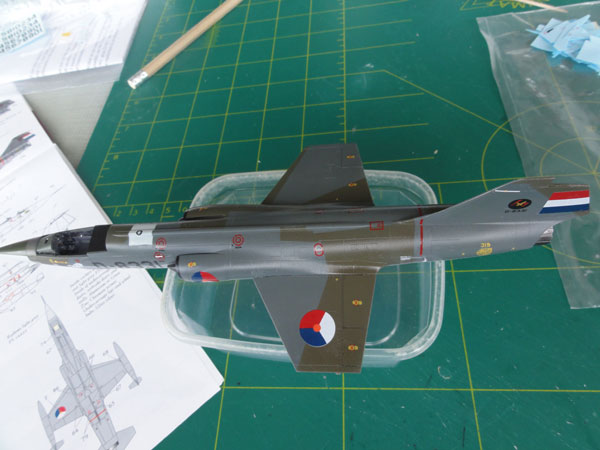
Note the slight "gloss" varnish of
this "high speed" aircraft.
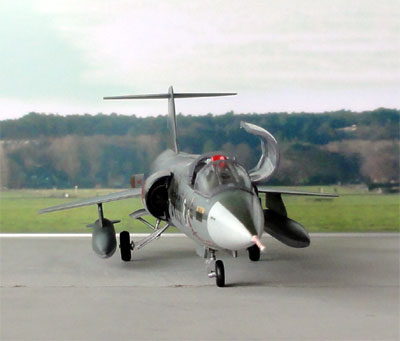
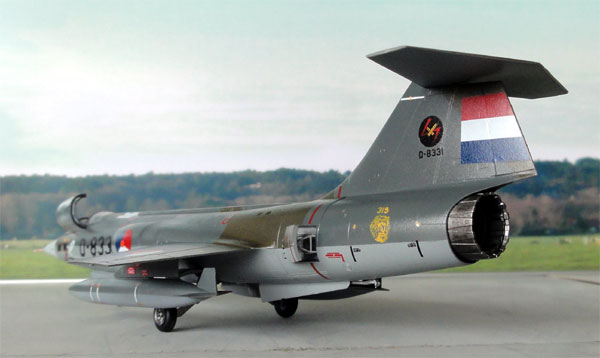
![]()
[2] Also an overall light grey KLu
F-104G was made with a Hasegawa F-104G, with overall RAL 7001 scheme. It
has the KLu code "D-8343" of an interceptor of KLu 311 squadron based at
Volkel AFB The Netherlands in year 1965 during the Cold War!
Here the good fuel tanks with correct
thickness are seen to good advantage.
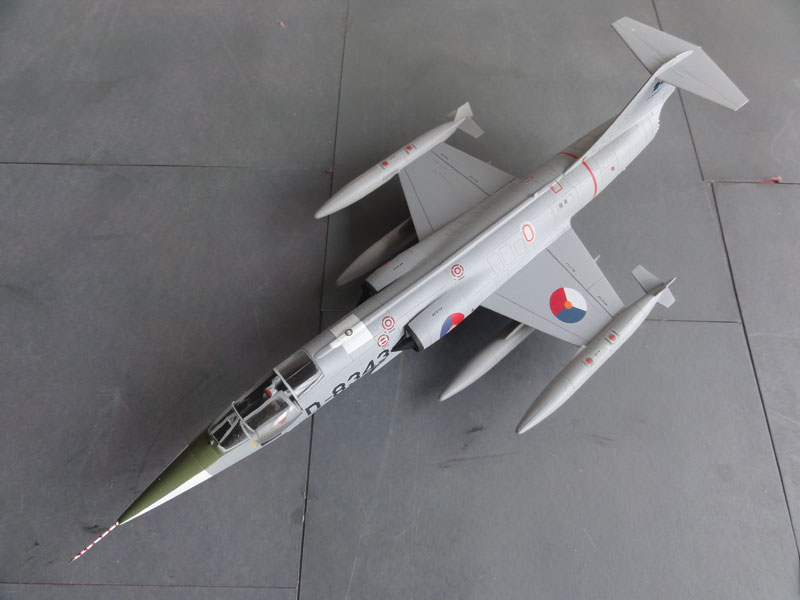
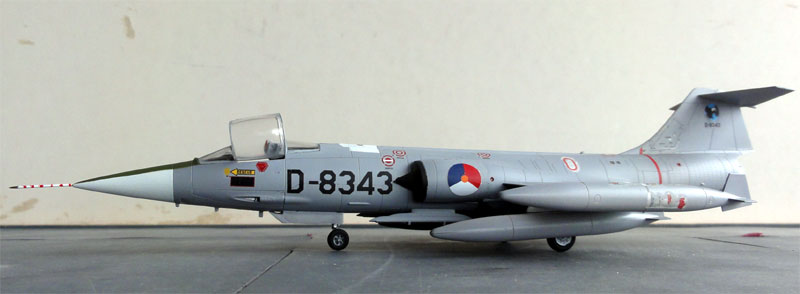
![]()
[3] Another
F-104G of KLu with code "D-8300" is of 311 squadron at Volkel AFB 1966
and it has a camouflage scheme with the RAL colours but it "borrowed" a
rear tail-fuselage section of a grey RAL 7001 KLu Starfighter "D-6666".
Peculiar is the demarcation line, not being at the "red" stripe. I later found out it should be at the same spot (the grey should extend the whole way), so the Dutch Decal drawing and many other profile drawings are incorrect. I should have been warned... so the lesson is to ALWAYS check a real aircraft photo of your scheme.
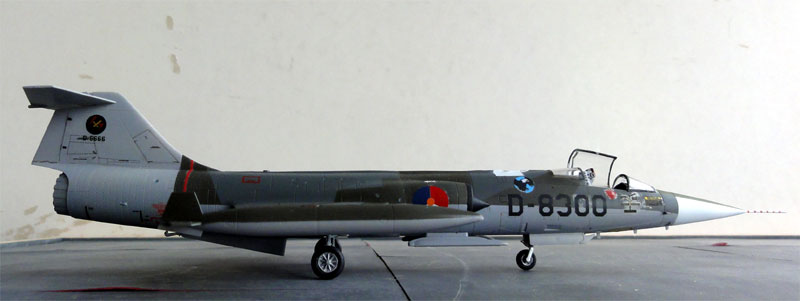
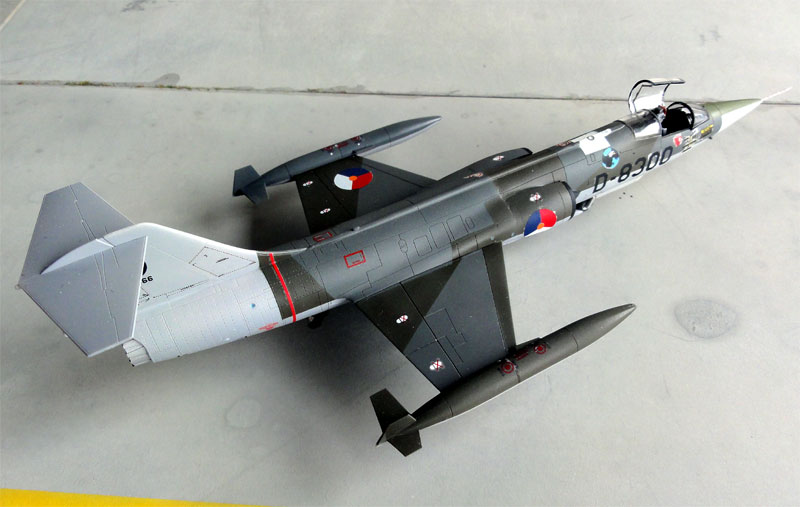
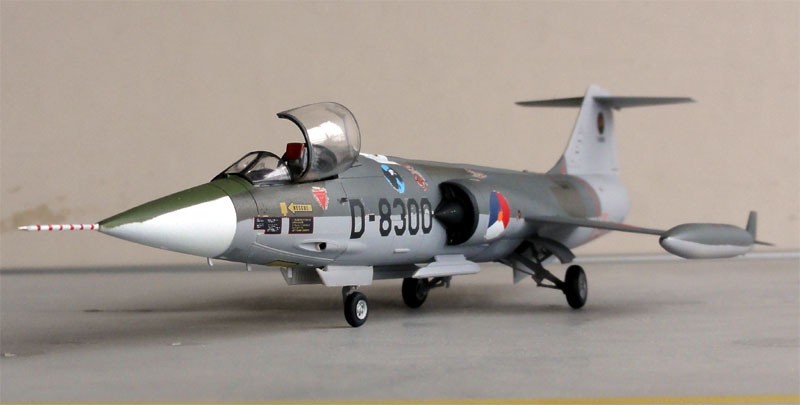
NOTE: the open
canopy look will benefit with adding some small rear view mirrors. (not
seen here...)
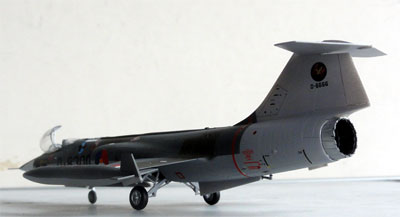
The Hasegawa 1/72 kit of the Italian
F-104S is very similar as their later better single seater
F-104G kits but you get an additional sprue with extra parts. We are getting
old, it was already issued in 1990!
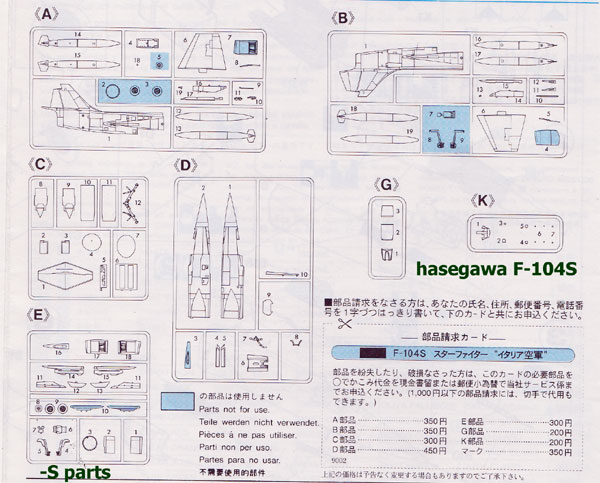
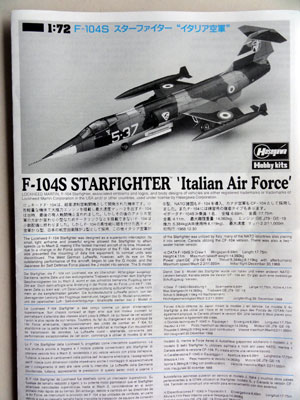
The extra parts are the 2 ventral
fins below the rear fuselage, additional Alenia ASPIDE Sparrow like missiles
and their pylons. Nice! The larger intake parts (E17 and E18) are also
catered and also the real –S extra rectangular auxiliary air panels on
the intakes. But the larger J79-GE-19 engine exhaust pipe (E3) is in the kit. Part E16 is
correct for the "closed" gun port of early F-104S aircraft that had the
canon removed. Later on, they were again installed!
The decals are very nice for 3 F-104S
Italian Air Force:
- 23 Gruppo 5 Stormo;
- 12 Gruppo 36 Stormo;
- 9 Gruppo 4 Stormo.
The latter two are in overall natural
metal while the first example has natural metal undersides and an upper
camouflaged scheme in Dark Green and Dark Sea Grey - the subject shown
on the boxart.
The cockpit is nicely done with a 3 piece seat, but I needed to remove 2 mm from its base as it is a bit "too tall". Instrument decals are provided as well.
This kit was assembled, note the similar comments above as for the other newer Hasegawa kits.
The camouflage was applied with the
fine Harder Steinbeck airbrush.
Colours used were RAL 7012 (Gunze Sangyo acrylic 331, or alternatively
use Humbrol 156 enamel) and for the green BSC 641 Humbrol enamel 163 (about
FS34079). The lower surfaces got, after masking with low tack tape, a coat
with a mix of aluminium and light grey acrylic (so not only aluminium).
The lower nose radarnose got a "Sky" colour.
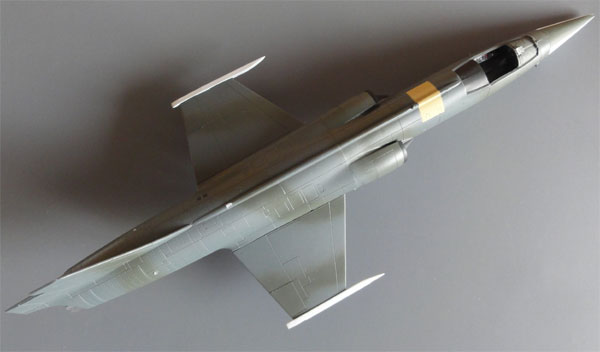
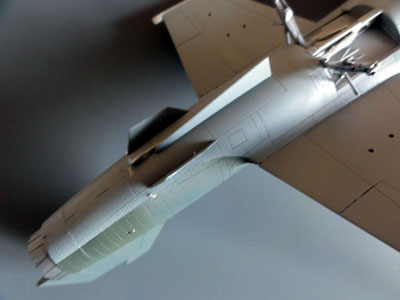
Here the extra F-104S ventral fins
are seen to add stability in flight.
The decals are fine with this kit
with loads of stencilling. The green roundel dots are separate to avoid
off-centre printing.
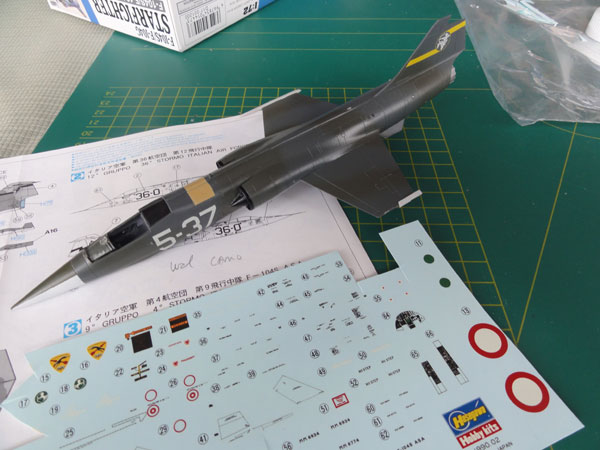
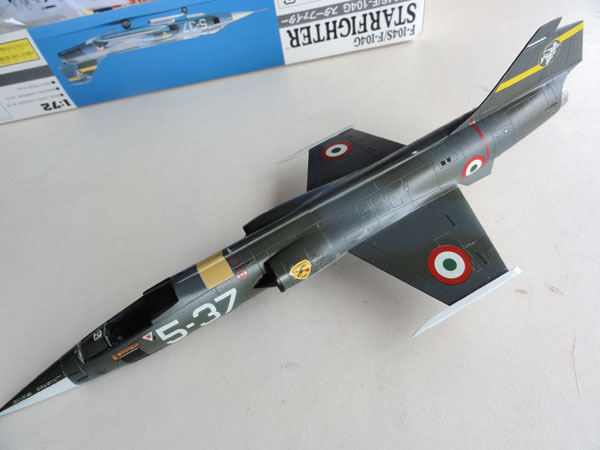
Note the wingtip missile pylons.

Around the windscreen some tiny gaps
were filled with white glue and the paint touched up with a paint brush.
Also the canopy frames were hand painted.

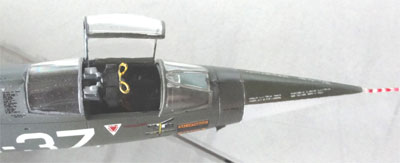
And the result.....
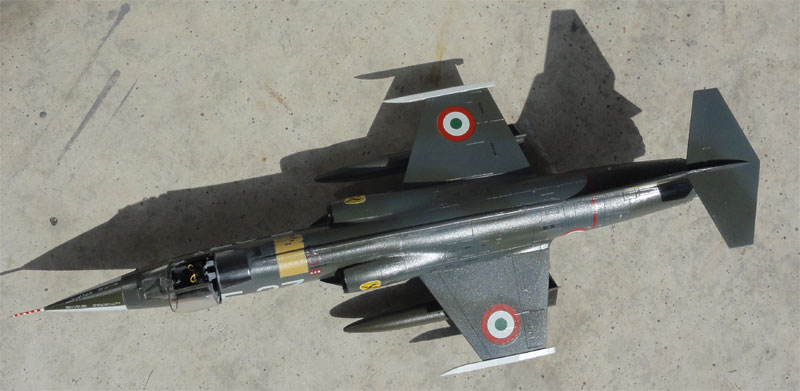
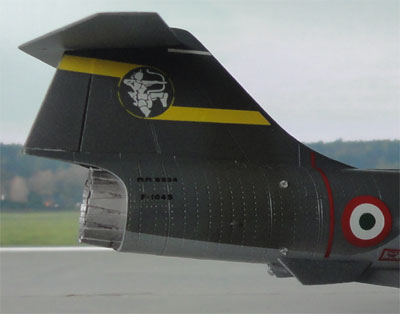
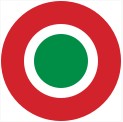 For more info about Italian military aviation look at my F-16 page here...
For more info about Italian military aviation look at my F-16 page here...Italian Air Force was one of the last operators of the Starfighter in the World. From 1963 they acquired the F-104G and TF-104G later followed from 1969 the F-104S which was also called the "Super Starfighter" with J79-GE-19 engine. It had initially its gun removed as it got AIM-7 Sparrow (Aspide) missile capability and 9 hardpoints. Some 246 F-104S were delivered (including replacements) and operated for decades until October 2004.
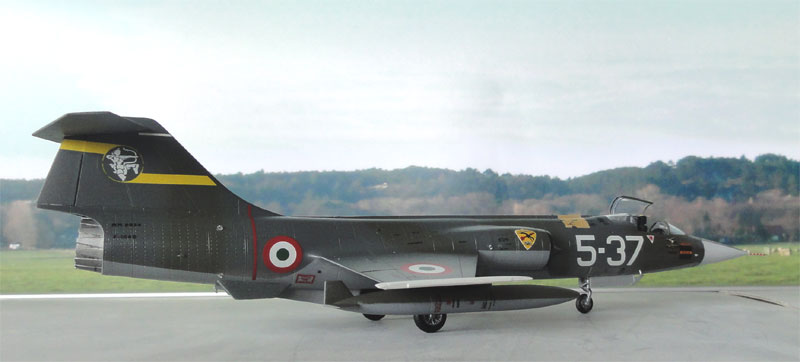
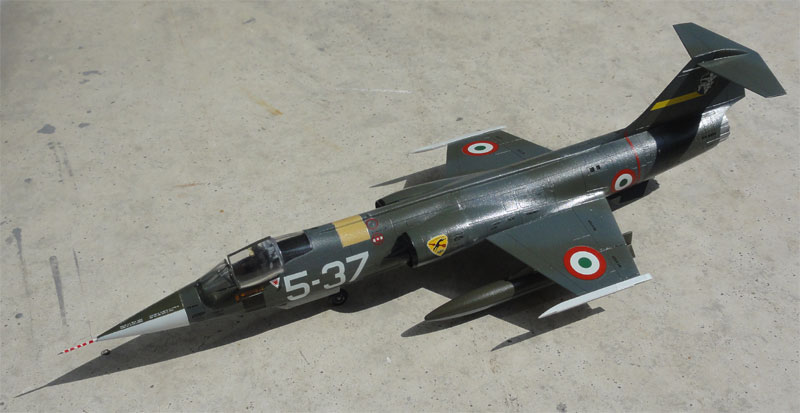
Note also "closed" gun port fairing
for an early F-104S.
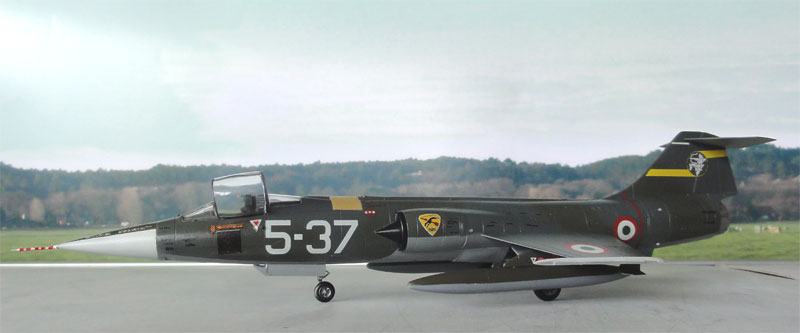
![]()
Hasegawa
TF-104 Starfighter
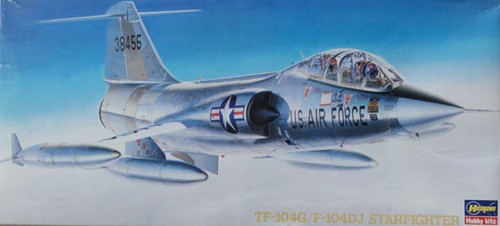
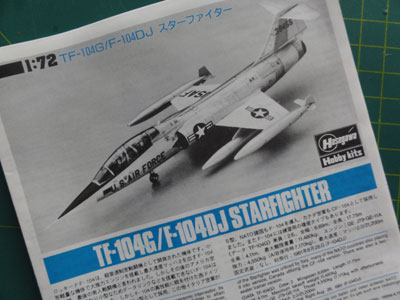
This Hasegawa TF-104 kit (with unclear
kit number but issued in 1990) is very similar as their better single seater
kits but with a different nose section and a twin cockpit and a
clear canopy in 5 pieces.
This kit is well researched. Parts
are included enable modelling a TF-104D with straight gear doors and correct
"thin" wheels as well as a TF-104G with the bulged doors and thicker wheels.
Two types of ejection seats are in the kit, the Lockheed C2 and the later
Martin baker seats. The wing fueltanks look OK and of correct thickness.
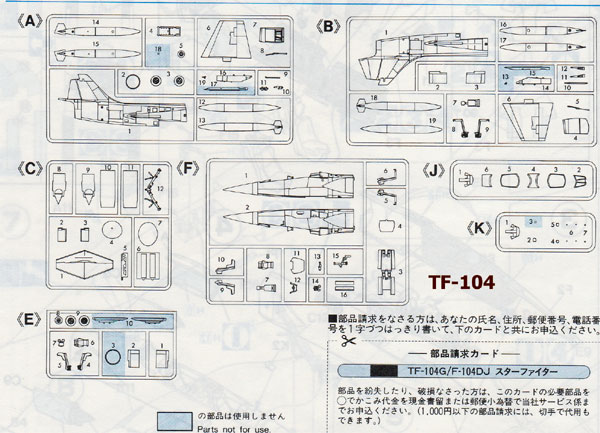
The decals are very nice with loads
of stencilling, cleaverly organized through a number of larger decals.
Kit decal schemes are for:
(1) TF-104G of USAF 69 TTFS with
metal colours
(2) TF-104DJ JASDF 203 squadron and
metal colours
(3) TF-104DJ JASDF 207 squadron and
metal colours
(4) TF-104G of the Belgian AF with
a camouflage scheme for the 10 JBW
My model is made as Japanese JASF TF-104DJ scheme (2) shown in the instructions.
The cockpit interior will benefit
from adding some additional details. I had an after market set (but
which one ???) for the details.
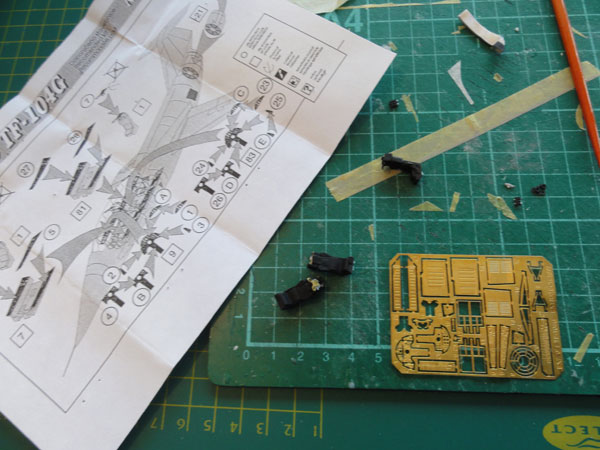
The seats needed for this TF-104DJ
are the Lockheed C2, with parts in the kit B7,B8,B9 and F5,F6,F7.
I found that ejection seats required removal of 2 mm plastic at their base
as they are a bit "too tall".
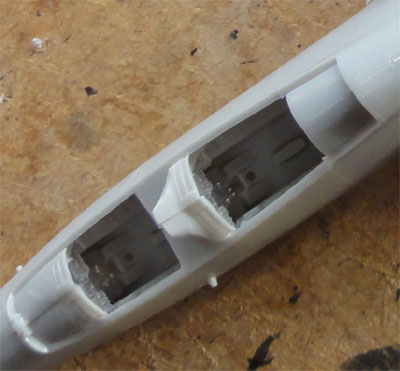
The thin wheels parts A3 with
non-bulged doors B2, B3 are used as well indicated by the instructions.
Further, assembly comments as for
the Hasegawa single seater described above apply. Careful alignment of
the forward and rear fuselage halves is required and fitting bay part #C6
must be done very precise, otherwise the model will not stand correctly
and symmetrical on its undercarriage.
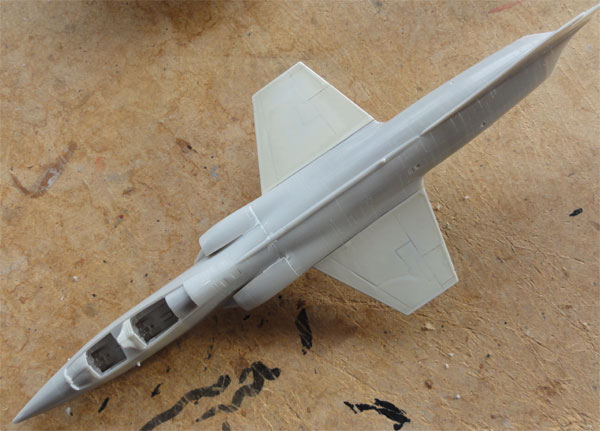
![]()
The scheme picked for this model
was with the very nice kit decals, for a Japanese JASDF TF-104DJ of 203
squadron. It has a metallic look.
The model got first a base light
grey colour coat to check for any irregularities. Next came the colours,
mostly ALCLAD II ALC-119 Aluminium for the airframe. Use medium grey
for the lower wing surfaces and lower nose radar cone and white for the
upper wing surfaces.
Some rear fuselage areas were carefully
masked with “low tack” post-it notes and slightly different coats of ALCLAD
II like "steel" at some panels. This looks more realistic as these Starfighters
had different metal hues at the rear fuselage. The anti-glare panel is
here black (so varies).
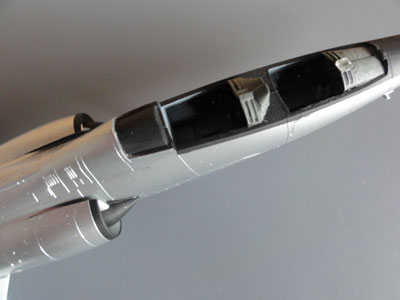
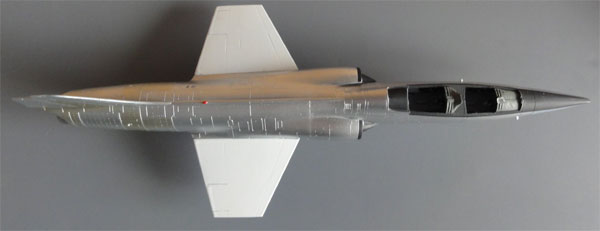
The wing fueltanks are bright orange
, for which I used Revell Aqua orange 25 acrylic and the tanks are of correct
shape in this kit.
The stencil decals in the kit are
very nice but need some work. These stencils look really impressive once
set onto the model.
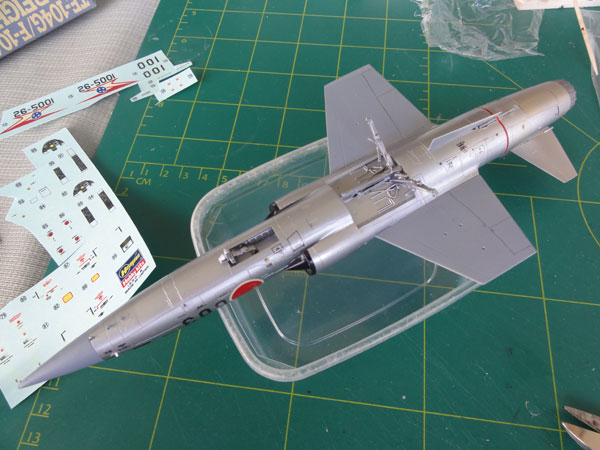
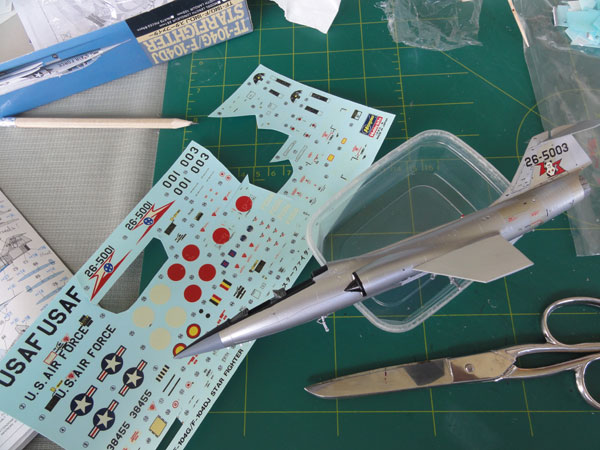
After decal application, a protective
coat of varnish was applied using Johnson
Future / Pledge with the airbrush.
![]()
A nice
TF-104
of 203 Squadron of the JASDF is now in the collection.
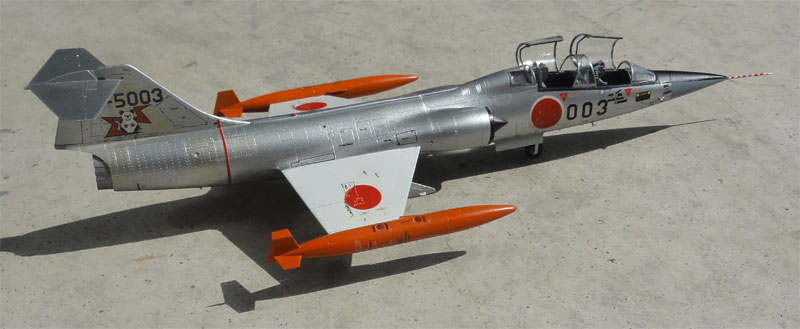
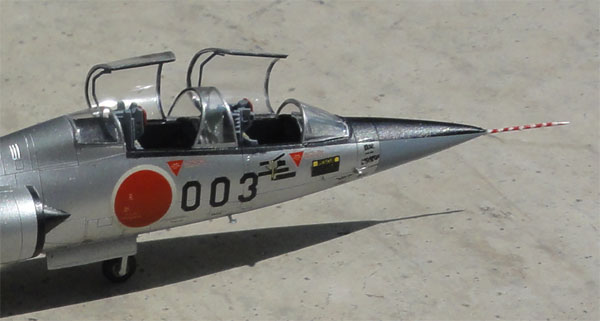
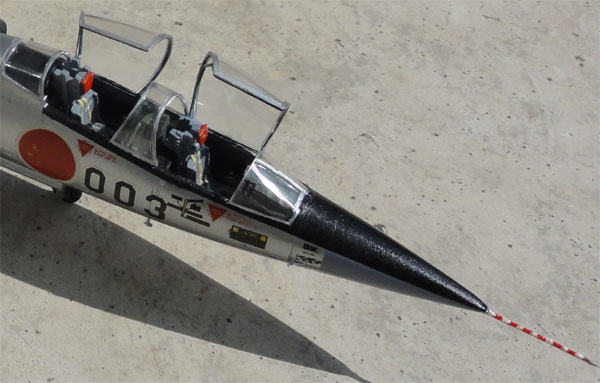
(note: you might add some extra pilot
very tiny rear view mirrors too...)
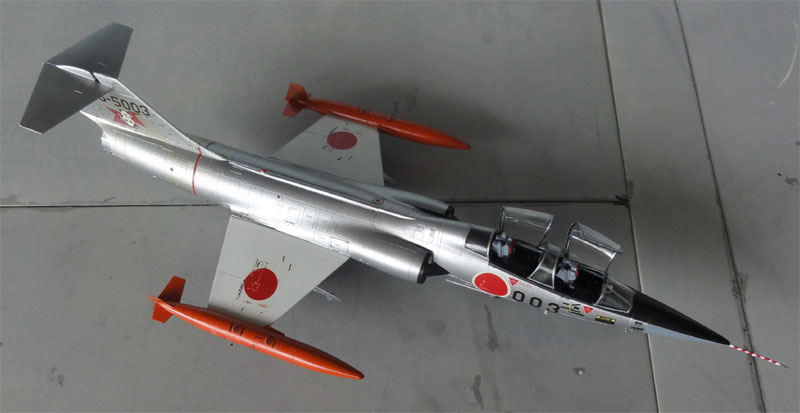
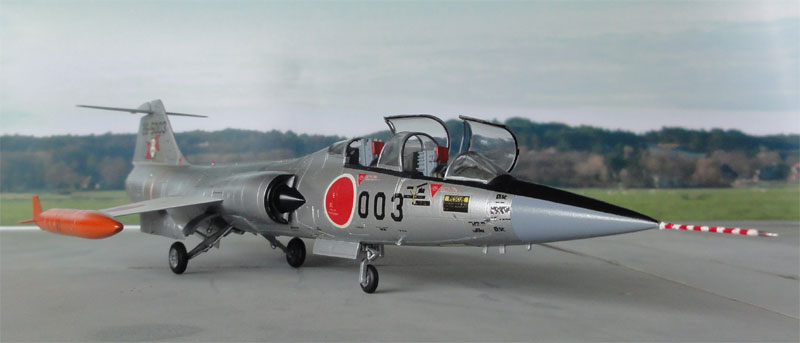

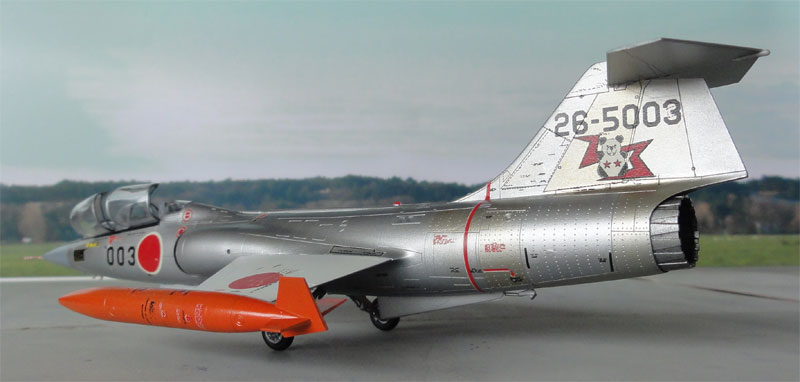
A nice JASF two seater trainer using
the Hasegawa kit is in the model collection!
On to next Page .....
![]()
Back to 1/72 Models.......

(c) Copyright Meindert "designer"/ All rights reserved. Your comments are welcomed by webmaster
Created this page
August 19, 2014
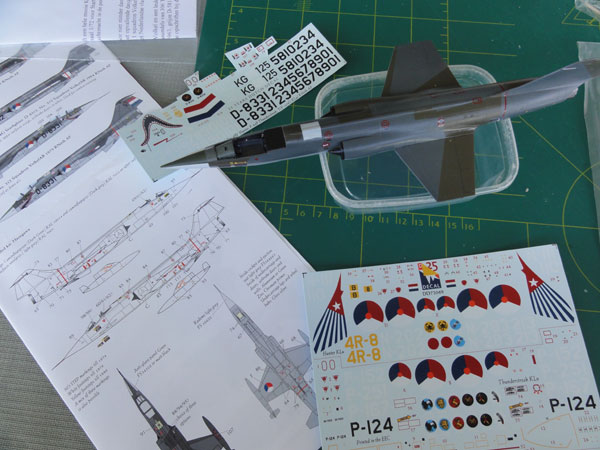
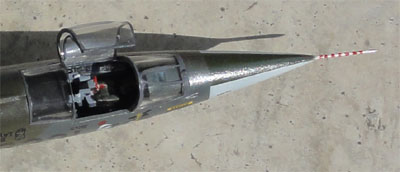 .
.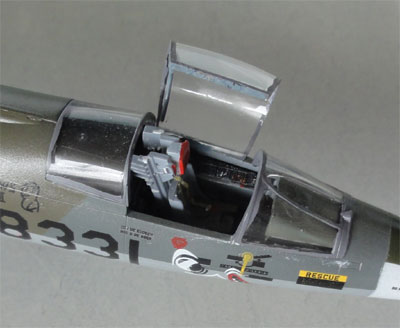


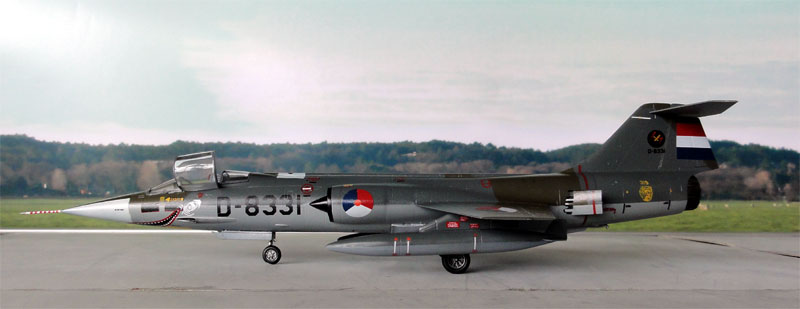
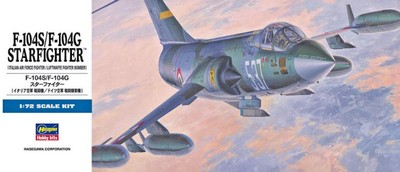 ..
..
